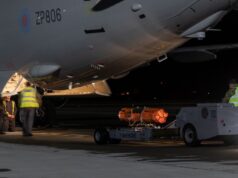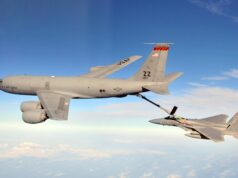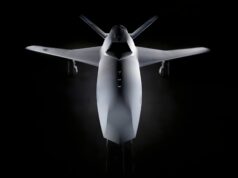The Royal Netherlands Air Force (RNLAF) and Lockheed Martin Skunk Works have achieved what the company described as a “breakthrough” in F-35 interoperability, successfully conducting a live classified data transfer between a Dutch F-35 in flight and a domestic command and control system during Exercise Ramstein Flag.
According to a statement released by Lockheed Martin on 14 April, this marks the first-ever live classified data exchange involving an F-35 outside the United States, and represents a significant step forward in multi-domain operations (MDO) within NATO.
In the live-fly scenario, Dutch F-35s operating in a simulated Anti-Access/Area Denial (A2/AD) environment detected and tracked multiple simulated threats. The targeting data was passed via the Multifunction Advanced Datalink to Lockheed Martin’s Open Systems Gateway (OSG), which relayed the information into Keystone, a Dutch Command and Control (C2) system. Keystone then directed a rocket artillery platform to strike and destroy a ground target—completing the sensor-to-shooter chain in a matter of minutes, the company said.
Lockheed Martin stated that the OSG unlocks a vast amount of data from the F-35, allowing allied C2 systems to receive real-time targeting information. According to the company, this capability enhances interoperability and decision-making across allied forces, contributing to faster and more coordinated joint responses.
“The combined joint all-domain capabilities demonstrated at Ramstein Flag are a breakthrough in multi-domain operations,” said OJ Sanchez, vice president and general manager at Lockheed Martin Skunk Works, who added that the integration shows how the F-35 can seamlessly operate with partner C2 environments.
RNLAF Air Commodore Bert ‘Vida’ de Smit also praised the outcome, stating: “Ramstein Flag was a resounding success, demonstrating the power of collaboration between United States Air Forces in Europe – Air Forces Africa (USAFE-AFAFRICA) and Skunk Works. We are thrilled with the results and look forward to continuing this work with our partners.”














Interesting that this is a ‘first’.
Potentially indicates that the F35’s ISTAR networking isn’t that functional as yet.
Although what level of data share this means is moot as ‘classified’ could mean anything at all in this regard.
Or is the article really just saying that a bespoke API was created?
First outside the US I think it said which I suspect means you are correct that a bespoke interface into the non-US Command and Control software was required. By classified data I suspect that they are referring to the actual targeting data. I’m sure the US SecDef will post it on Signal soon though.
We did it recently but in the USA. Given the aircraft has been in operation for ten years now it’s a joke that this has taken so long.
This is the reason LM didn’t win the NGAD competition. Its software capabilities are just shocking and it’s always trying to run before it can walk.
LM didn’t win NGAD because Boeing is on life support. It has nothing to do with software capability of the F-35.
The Dutch won’t have massive firing ranges so thinking this a Dutch f35 relaying data to LM whatever which instructs Dutch ground system to fire. Impressive
I wonder just how secure any secret/classified is under the Trump regime when he fawns over Putin & attacks allies. He kept classified materials illegally at his home in his 1st term.